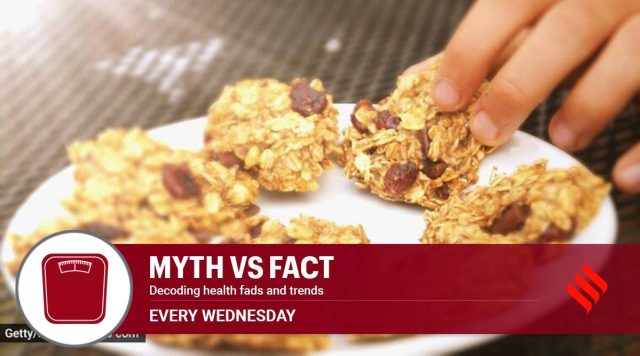Commercially-produced protein bars contain high amounts of added sugar. Besides, they use unhealthy sweeteners like high-fructose corn syrup, which can increase your risk of fatty liver, obesity and diabetes when consumed in high amounts, says Dr Neeti Pravesh, Associate Consultant- Internal Medicine, Max Hospital, Shalimar Bagh
Protein bars are a popular snack food designed to be a convenient source of nutrition. Many people enjoy them because they are a quick way to add protein and other nutrients in the diet. Many protein bars are made from dates and dried fruit, nuts and seeds, and whole grains like oats or quinoa. The average protein bar contains 5–10 grams of fat, 25–35 grams of carbs and 5–10 grams of fibre. Many protein bars are a good source of micronutrients, such as calcium, B vitamins, potassium and iron. But these may be just claims made for a sales pitch when the fact of the matter is that protein bars could be just another candy treat while lulling us into thinking that we are eating healthy.
These days many commercially produced protein bars contain high amounts of added sugar. Besides, they use unhealthy sweeteners like high-fructose corn syrup, which adds excess fructose to your diet and can increase your risk of fatty liver, obesity and diabetes when consumed in high amounts. Sometimes they may use cane sugar and honey.
Generally, most protein bars offer 150–400 calories and 10–20 grams of protein, although some contain closer to 30 grams of protein. The source of protein also varies. Some bars feature yogurt powder, milk, or dairy proteins like casein and whey, while others use plant-based sources like soy, pea, or brown rice. Some contain egg whites, while others rely on nuts and seeds as a primary protein source. Moreover, some protein bars use highly concentrated sources like whey or soy protein isolates, instead of less processed, whole food protein options. If you are one of those who think that munching on a bar will give you the required protein, remember that you can get enough protein through the dietary route. Some people already consume more protein than their body requires. One Greek study of 32 human studies found that eating more protein than the recommended dietary allowance (RDA) of 0.8 grams per kg)of body weight was associated with an increased risk of cancer, heart disease, bone, liver and kidney disorders. So why invite a disease and metabolic burden while gorging on protein bars?
While some protein bars may use fat from whole nuts and seeds, most use highly processed plant oils, like palm, canola, peanut or soybean oil.
A protein bar of no use if it is made with refined and processed ingredients. So read the food label. Understand that ingredients on the label such as glycerin, soy nuggets, gum arabic, soy lecithin and maltitol syrup are of no use to your body. Have some real food instead.









